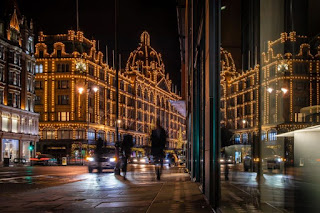“If the path be beautiful, let us not ask where it leads.” -– Anatole France
=================================================================(in the in the eastern section of the northern Italian Alps) The Dolomites are widely regarded as being among the most attractive mountain landscapes in the world. Their intrinsic beauty derives from a variety of spectacular vertical forms such as pinnacles, spires and towers, with contrasting horizontal surfaces including ledges, crags and plateaus, all of which rise abruptly above extensive talus deposits and more gentle foothills. A great diversity of colors is provided by the contrasts between the bare pale colored rock surfaces and the forests and meadows below. The mountains rise as peaks with intervening ravines, in some places standing isolated but in others forming sweeping panoramas. Some of the rock cliffs here rise more than 1,500 meters and are among the highest limestone walls found anywhere in the world.
+ Featured here is the Fassa Valley (Val di Fassa), which is found in the Dolomiti Superski area on the famous Sellaronda circuit --enabling pectacular views of the surrounding mountains. The Fassa Valley lies in Trentino-Alto Adige, made up of two provinces, the Italian-leaning Trento (or Trentino) in the south and the Germanic-leaning Alto Adige (or Südtirol (also called Bolzano-Bozen) in the north. Home to numerous lovely towns, castles, and historic sights, the main attraction here is the Dolomites. Surrounded by some of the most famous and impressive peaks of the Dolomites, like Catinaccio, Sella Group, Marmolada and Sassolungo, to list just a few (and some characteristic villages, like Moena and Canazei), outdoor adventure opportunities abound year-round, with skiing, climbing, and hiking among the most popular pursuits.
+ Depicted here is Canazei, a well-known tourist destination for winter and summer holidays that is one of the most renowned resorts in the Val di Fassa. It is part of the Sellaronda, the ski tour that connects the valleys around the Sella. Nestled between some of the most beautiful ranges in the Dolomites, the Sassolungo, the Sella Group, and the Marmolada, it is located near some famous passes: the Fedaia Pass that connects it to Rocca Pietore, the Pordoi Pass that connects it to Arabba and to Badia, and the Sella Pass that connects it to Val Gardena. With marvelous landscapes, painted houses, and exclusive hotels, it is a destination for holidays all-year-round. (Indeed, the most attractive ski slopes of the Val di Fassa (with fairytale hiking routes, traditional festivals, and tasty cuisine) as found here -- not to mention many international events.
+ Canazei consists of several hamlets, including Alba di Canazei, directly connected to the Ciampac-Buffaure ski area, and Penia di Canazei, where the traditional Carnival takes place.

















